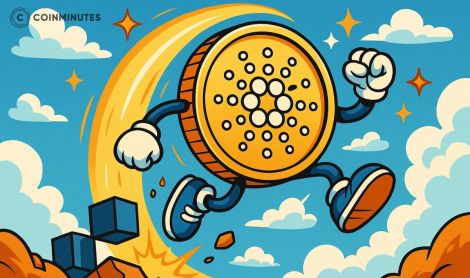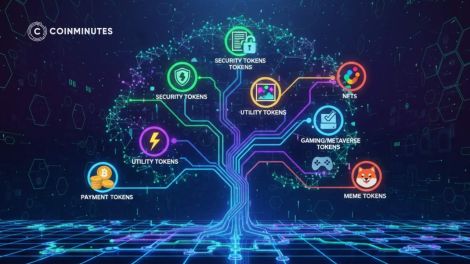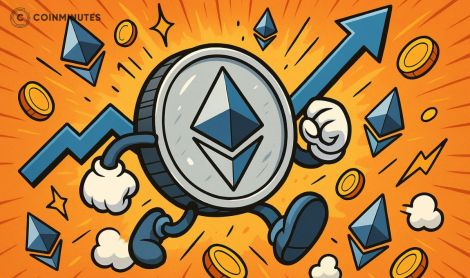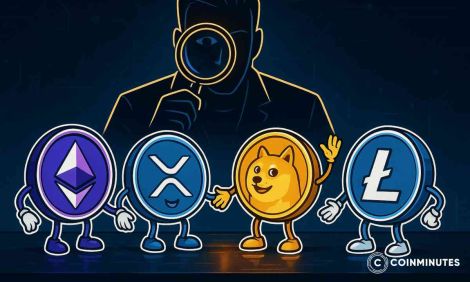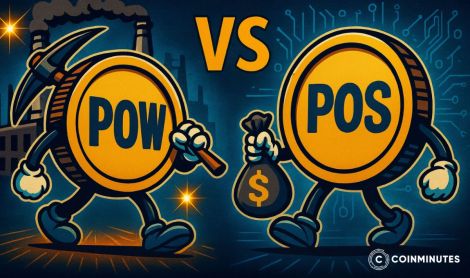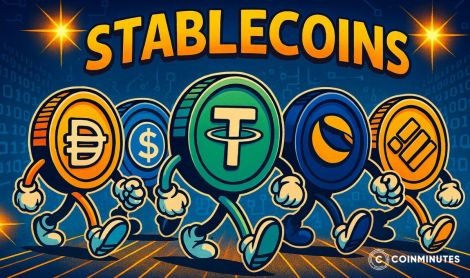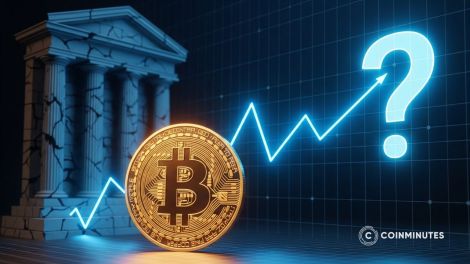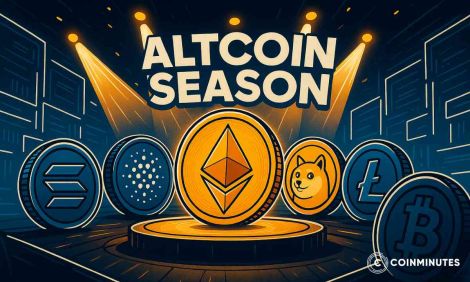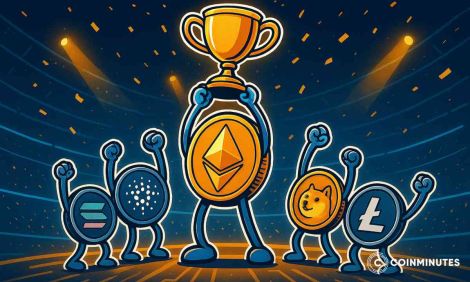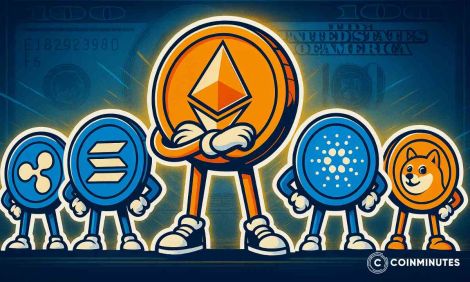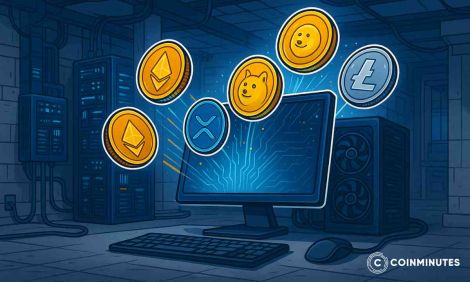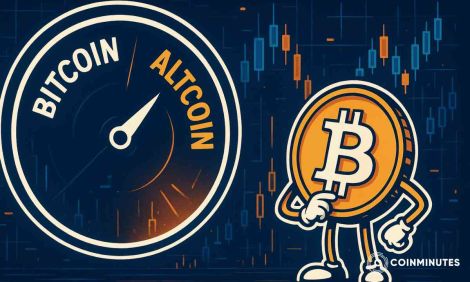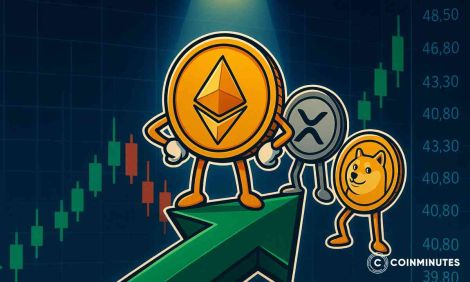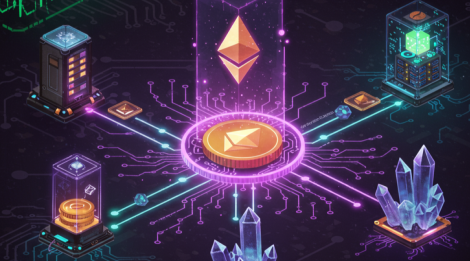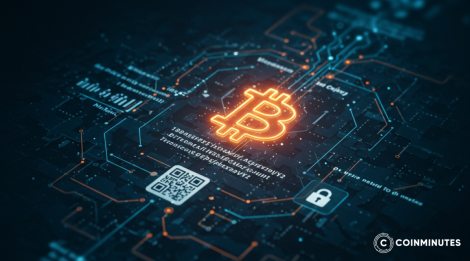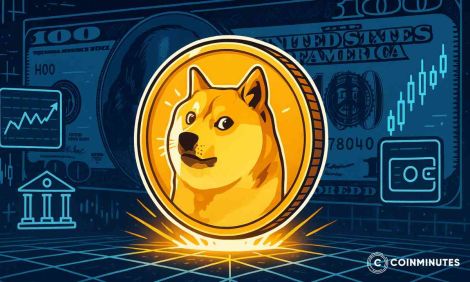Everything About Solana (SOL): The Ultimate Guide to the High-Speed Blockchain

Welcome to CoinMinutes. You understand Bitcoin (digital gold) and Ethereum (the app platform). Another big name that has been somewhat aggressive in forcing its way into the top tier is Solana (SOL).
When talking about speed, it is Solana that everyone is referring to.
To directly answer the complaint of high "gas fees" on Ethereum, it was designed from the very beginning to be unbelievably fast and very cheap. But is it really a competitor, or is there just a lot of hype around it? And what about those times that it has crashed? This guide will help you understand everything about Solana without any fluff.
The Basics of Solana
At its simplest, Solana is a "Layer 1" blockchain. That just means it's a foundational network, like Ethereum or Bitcoin, that developers can build other applications on top of. It's an open-source project, so anyone can use it or build on it.
The whole thing was started in 2017 by Anatoly Yakovenko. This is a key detail. Yakovenko wasn't just a crypto enthusiast; he was a high-level engineer at Qualcomm, a company that lives and breathes wireless technology and system performance. He looked at the blockchain world and, in my opinion, saw an engineering problem. He saw Bitcoin handling 7 transactions per second (TPS) and Ethereum handling about 15, and he knew that was a dead end. You can't run a global financial system or a high-speed video game on a network that slow.
So, he set out to build a blockchain from the ground up, designed for one thing: performance.
This gets us to the famous "blockchain trilemma." It's a well-known concept that says a blockchain can have three things:
-
Decentralization (it's run by many people, not one)
-
Security (it can't be attacked or hacked)
-
Scalability (it can handle tons of users and transactions, i.e., it's fast)
The trilemma states that it's almost impossible to have all three. You have to pick two. Bitcoin, for example, is incredibly decentralized and secure, but it's not scalable. It's slow. Solana's big, gutsy bet was to challenge this idea. Anatoly's core innovation, which we'll get into next, was a new piece of technology that he believed could let Solana be decentralized, secure, and super scalable all at once.
The network's native coin is SOL. The SOL token is the "gas" for this engine. You use it to pay for all the tiny transaction fees, and you can also "stake" it (lock it up) to help secure the network and earn rewards.
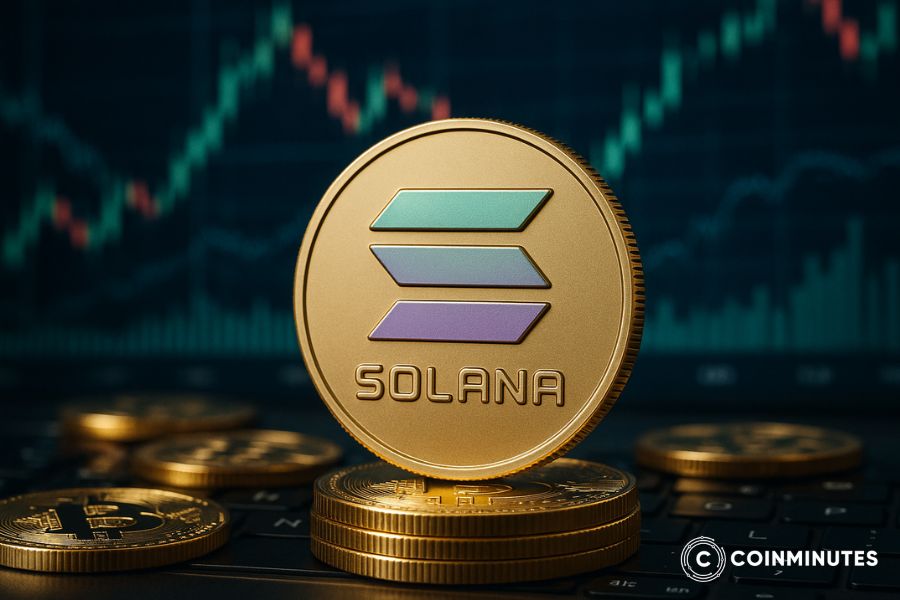
How Does Solana Work?
This is where things usually get super technical and eyes glaze over. But the core idea is actually pretty simple. It's all about time.
Core Technology
The secret sauce is called Proof of History (PoH). It's important to know that PoH is not a consensus mechanism—it doesn't replace Proof of Stake. It's more like a super-accurate, decentralized clock that works with Proof of Stake.
Here's why that matters. On a normal blockchain, all the validators (the computers running the network) have to constantly talk to each other to agree on the order of transactions. "Did you get transaction A before transaction B?" "Yes, I got A at 10:01." "Weird, I got B at 10:00." This back-and-forth "chatter" takes a ton of time and is a major reason why they're so slow.
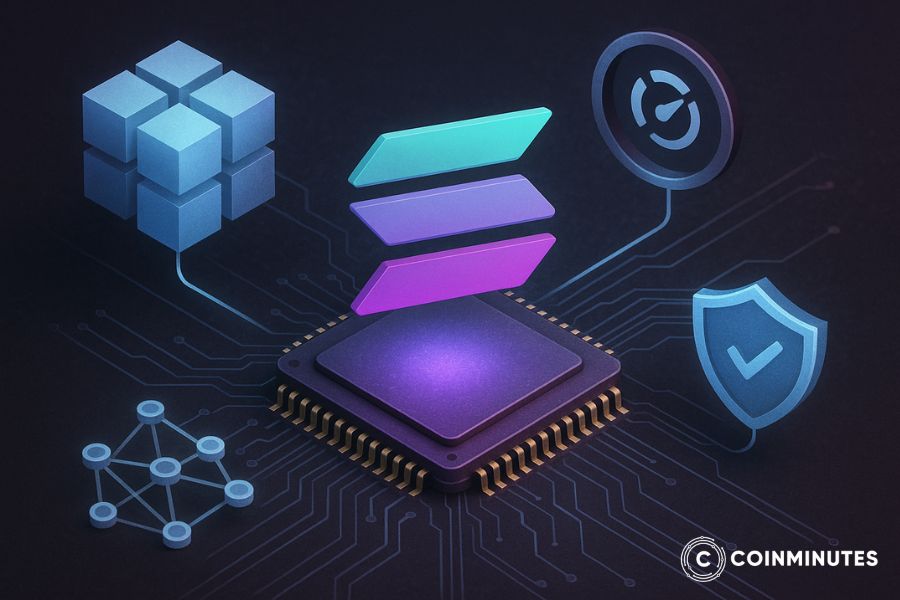
PoH solves this by creating a verifiable timestamp for every single transaction before it's even sent to the validators. It's like every transaction is automatically stamped with a "provably true" timestamp.
When a validator gets a new block of transactions, they don't need to waste time arguing about the order. They can just look at the timestamps and know exactly what happened and when. This is what unlocks Solana's next big trick.
How Solana Achieves High Throughput & Low Fees
Because the order of transactions is already known, the validators can process them all at the same time, or in "parallel." This is the key.
-
The Ethereum Virtual Machine (EVM) is like a single-core processor from the 90s. It has one "thread," so it has to process transactions one by one, in a single file line.
-
Solana's architecture, which they call Sealevel, is like a modern 16-core gaming processor. It can process thousands of transactions (smart contracts) at the same time on different cores.
This parallel processing is what allows Solana to achieve its crazy-high theoretical speeds of over 50,000 transactions per second.
Solana Architecture
There are a few other nerdy, but important, pieces of tech that make this work:
-
Turbine: This is a protocol for data. Instead of a validator shouting a huge 128MB block of data to everyone on the network at once (which is slow), Turbine acts like a woodchipper. It breaks the block into thousands of tiny, 64KB packets. Each validator just sends its tiny packet to its direct neighbors, who send it to their neighbors. The data spreads through the network in seconds.
-
Gulf Stream: This is a way to get a head start. In other chains, transactions wait in a big "mempool" (a digital waiting room) to be picked. Solana's Gulf Stream forwards transactions to the next validator in line before the current one is even finished. It's always one step ahead.
When you combine PoH (the clock) + PoS (the security) + Sealevel (parallel processing) + Turbine (fast data), you get the high-speed, low-fee machine that is Solana.
SOL Token
The SOL token is the lifeblood of this entire system. It has three main jobs:
-
Pay for Fees: Every action you take on the network—sending money, minting an NFT, voting—costs a tiny fee. These fees are paid in SOL.
-
Staking (Security): This is the "Proof of Stake" part. Token holders can "delegate" their SOL to a validator. This is like casting a vote of confidence. The validator uses this "stake weight" to help secure the network. In return, both the validator and the delegator get paid rewards in new SOL tokens.
-
Governance: SOL is also used to vote on the future of the network, though this is less of a focus than in some other chains.

The tokenomics (the economic rules) of SOL include an inflation schedule to pay these staking rewards. This rate is designed to decrease over time until it settles at a long-term, fixed rate.
The Story of Solana
Solana's history has been a rollercoaster of massive highs and terrifying lows. It's a story of genius engineering, insane hype, and near-death experiences.
The Origin
As I mentioned, the project was born in 2017 when Anatoly Yakovenko published his Proof of History whitepaper. He quickly brought in his old Qualcomm buddies, Greg Fitzgerald and Stephen Akridge, and they built a company (Solana Labs) to bring the idea to life. After a few years of heads-down building and several funding rounds, the "Mainnet Beta" (an early, "use at your own risk" version) finally went live in March 2020.
Major Launches, Upgrades & Outages
For its first year, Solana was a pretty niche, "developer-only" chain. Then came the 2021 bull run, and with it, "Solana Summer."
I remember this period well. Ethereum was completely unusable. Gas fees were $100-$200 for a simple transaction. Everyone was desperate for an alternative. And there was Solana—fast, new, and with fees that were fractions of a cent. An absolute tidal wave of developers, users, and money flooded into the ecosystem.
But this is where the problems started. The network was too popular, too fast. It was like a new highway that was suddenly hit with a million cars. The network got spammed, and in September 2021, it had its first major crash. The network went completely dark for over 17 hours.
This was a huge embarrassment. And it wasn't the last time. The network suffered several more outages and periods of intense "congestion" (crypto-speak for a massive traffic jam) over the next year. This became Solana's biggest weakness and a huge joke for its critics. "Fast, but does it work?"
This forced the engineering team to get serious about stability. The most important upgrade in its history is happening right now: Firedancer. Firedancer is a completely new, independent validator client being built from scratch by a third party. Why is this a big deal? Because before, everyone ran the same software. A single bug in that one piece of software could crash the whole network. Firedancer is "client diversity." It's a seatbelt. If one client fails, the other can keep the network running.

Ecosystem Funding, Community, and Partnerships
Solana has never been short on cash. In June 2021, at the peak of the hype, Solana Labs raised a massive $314.15 million in a private token sale led by Andreessen Horowitz (a16z) and Polychain Capital.
This war chest has been used to fund the ecosystem, mainly through hackathons. These are a core part of Solana's culture. They're big, competitive events with large prizes that attract thousands of developers to come and try building cool new apps.
But the most important validation, in my opinion, has come from the real world. In 2023, Visa announced that it was officially expanding its stablecoin settlement pilots to include the Solana blockchain. This was a massive stamp of approval. Visa, one of the biggest payment companies on Earth, looked at all the blockchains and chose Solana for its speed and low costs. This is a real-world case study, not just crypto-insider hype.
Main Features & Competitive Advantages of Solana
So, let's just lay it out. Why would a developer or user choose Solana over a giant like Ethereum?
Lightning-Fast Transactions & Sub-Second Finality
This is its #1 feature. Solana's block time is around 400 milliseconds. That means the network is creating new blocks multiple times per second. For a user, this feels like using a normal website. It's fast. You click a button, and the transaction is confirmed almost instantly. Compare that to waiting 15 seconds on Ethereum or 10 minutes on Bitcoin.
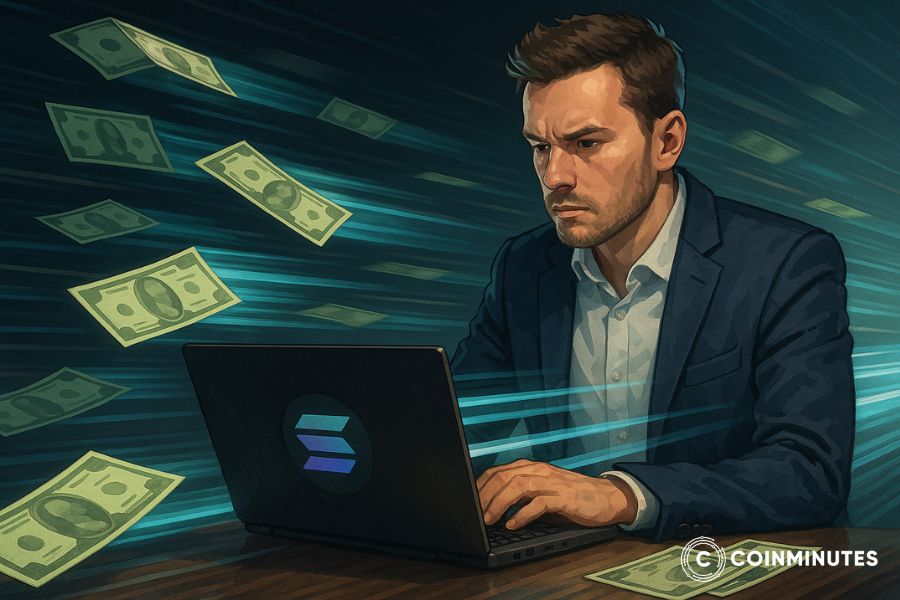
Rock-Bottom Fees
This is the other half of the equation. Because the network can handle so many transactions (high "throughput"), there's no real competition for space. Transaction fees on Solana are almost free, usually costing around $0.00025.
These two features aren't just a "nice to have." They make new kinds of apps possible. You can't build a high-frequency trading platform or a fast-paced video game on a chain where every action costs $10 and takes 15 seconds. On Solana, you can.
Scalability Without Sharding
This is a bit technical, but I find it fascinating. Ethereum's plan for scaling is "sharding," which means breaking the blockchain into many smaller, parallel chains (shards). The problem is that getting these shards to talk to each other is very complex.
Solana's philosophy is the opposite. It's a single, unified state. It's just one big, super-fast blockchain. This means "composability" is seamless. An app in "DeFi-town" can instantly talk to an app in "NFT-ville" without having to go over a slow, complicated bridge. For developers, this is a huge advantage.
Developer-Friendly
Solana's smart contracts (which they call "programs") are written in Rust, C, and C++. These are powerful, modern programming languages that millions of developers already know. This makes it easier for non-crypto developers to start building. The community also built a framework called Anchor that simplifies the whole process and makes it much harder to make a security mistake.
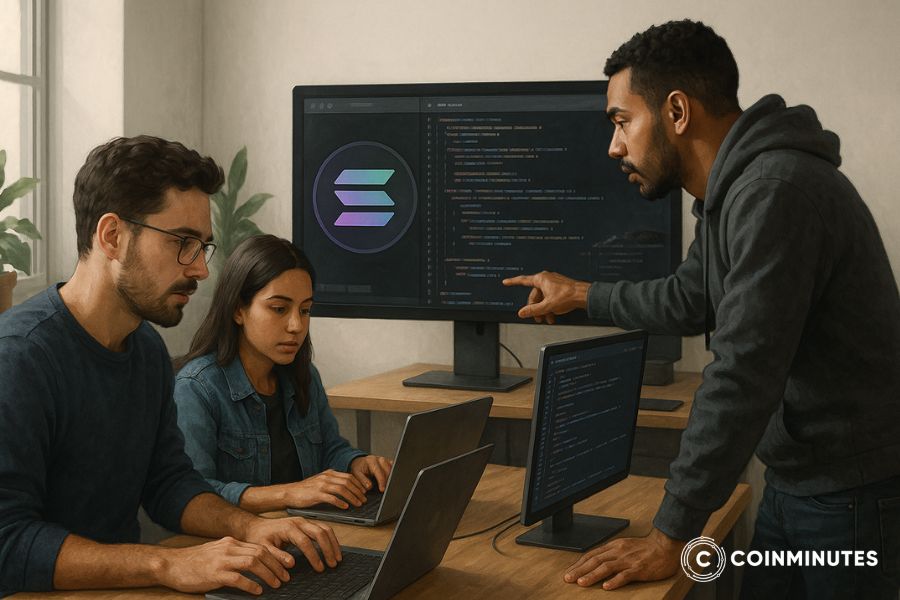
Sustainability & Energy Efficiency
This is an easy win. Because Solana uses Proof of Stake (PoS), it's incredibly green. The Solana Foundation has put out reports showing that a single Solana transaction uses less energy than two Google searches. In a world that is (rightfully) concerned about the environmental impact of crypto, this is a major plus.
Use Cases & Real-World Applications of Solana
Solana's speed and low fees have made it a magnet for specific kinds of applications that just can't work on slower chains.
DeFi on Solana
The Solana DeFi ecosystem is huge and very active. Because the fees are so low, you can do things that aren't practical on Ethereum. You can build central limit order books (CLOBs), which are the same kind of high-speed trading engines that the New York Stock Exchange uses.
Jupiter is one of the most-used decentralized exchange aggregators in all of crypto, routing billions of dollars in trades. Jito and Marinade Finance are a core part of its DeFi scene, offering "liquid staking" (more on that later).
NFTs & Digital Collectibles
Solana was a massive hub for the 2021-2022 NFT boom. Its low minting costs changed the game. On Ethereum, it might cost $100+ to "mint" a new NFT. On Solana, it costs a few cents. This allowed artists to launch huge collections of 10,000 items for a tiny fraction of the cost, which led to the PFP (profile picture) craze. Marketplaces like Magic Eden and Tensor are still huge and process massive volumes.
Gaming, Web3, and Emerging Sectors
This is where Solana's speed really shines. A video game might need to record hundreds of on-chain actions (getting an item, casting a spell) per minute. You can't do that if every action costs $5. Solana is a natural fit for crypto gaming, and big projects like Star Atlas are building massive virtual worlds on it.
But the new, hot narrative that has found its home on Solana is DePIN (Decentralized Physical Infrastructure Networks). This is a fancy term for using crypto tokens to pay people to build real-world infrastructure.
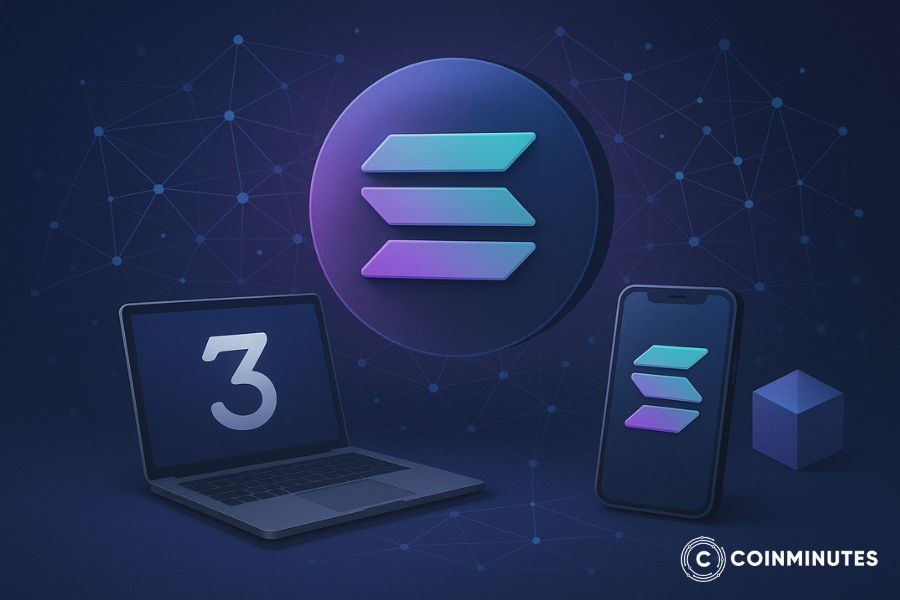
The two biggest examples here are Helium and Render. Helium is a decentralized 5G and Wi-Fi network. They had their own blockchain, but it was too slow. In 2023, they migrated their entire project over to Solana to handle their massive transaction load. The Render Network, a decentralized network of GPUs for visual rendering, did the exact same thing. These projects choosing Solana was a huge vote of confidence.
Enterprise & Institutional Adoption
Big companies are starting to use Solana as a high-speed payment rail. Solana Pay is a protocol that lets merchants accept payments in stablecoins (like USDC) directly from a customer's wallet. The fee is a tiny fraction of a cent, which could one day compete with the 2-3% fees from credit card companies. As I mentioned before, Visa's pilot program to settle stablecoin payments on Solana is a clear sign that the "grown-ups" are taking it very seriously.
Challenges of Solana
A balanced view is critical, and as a team at CoinMinutes, we have to be honest about the major problems Solana has faced. It has not been a smooth ride.
Network Outages & Congestion
This is the big one. Solana's reputation for being "fast" is matched by its reputation for failing. The network has had multiple major outages where it completely stopped processing blocks, sometimes for over 17 hours. It's like a race car that's constantly breaking down. These crashes were mostly caused by bugs in the code or the network's inability to handle massive bursts of spam transactions from bots. While the upgrades have made it much more stable recently, this history of unreliability is a huge shadow over the project.
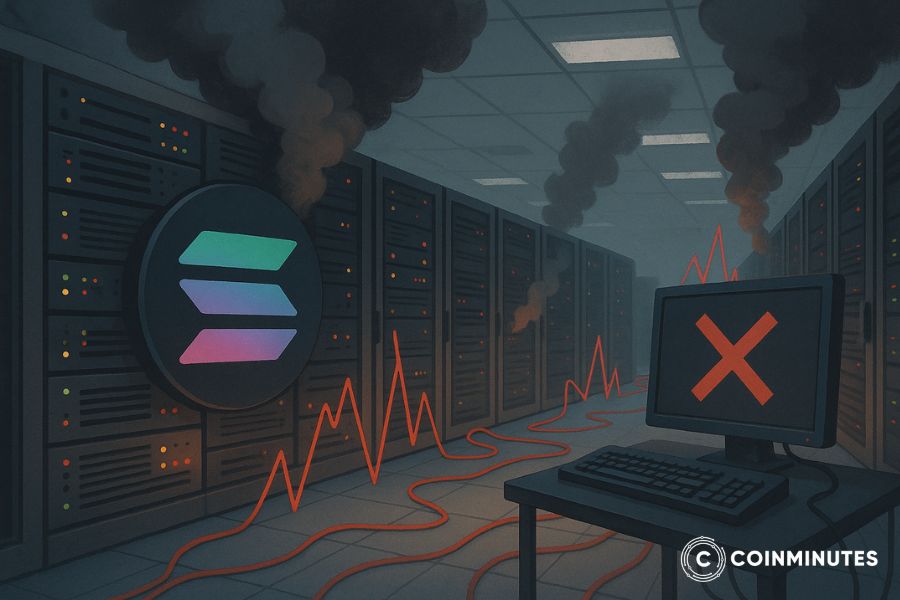
Centralization Concerns
This is a very valid and important criticism.
-
Hardware is Expensive: Running a "validator" node that can actually keep up with Solana's high-speed network is not for regular people. You need a very powerful, very expensive server. This high barrier to entry means fewer people can participate in securing the network.
-
Stake is Concentrated: A relatively small number of validators and organizations control a large percentage of the staked SOL. The "Nakamoto Coefficient" is a way to measure this (it's the number of entities you'd need to collude to attack the chain). Solana's has historically been low compared to Ethereum, which is a real centralization risk.
Security, Hacks, and User Protection
The Solana ecosystem has been a juicy target for hackers.
-
The Wormhole Hack: In 2022, a "bridge" connecting Solana to Ethereum called Wormhole was hacked, and over $320 million was stolen. To be clear, this was a hack of an app on Solana, not the core blockchain itself, but it was a devastating blow to the ecosystem's (and my own) confidence.
-
The Slope Wallet Hack: Also in 2022, thousands of users had their wallets drained. This was traced back to a wallet provider called Slope that was insecurely storing its users' private keys on a central server. Again, not a flaw in Solana, but a failure in the ecosystem that hurt real people.
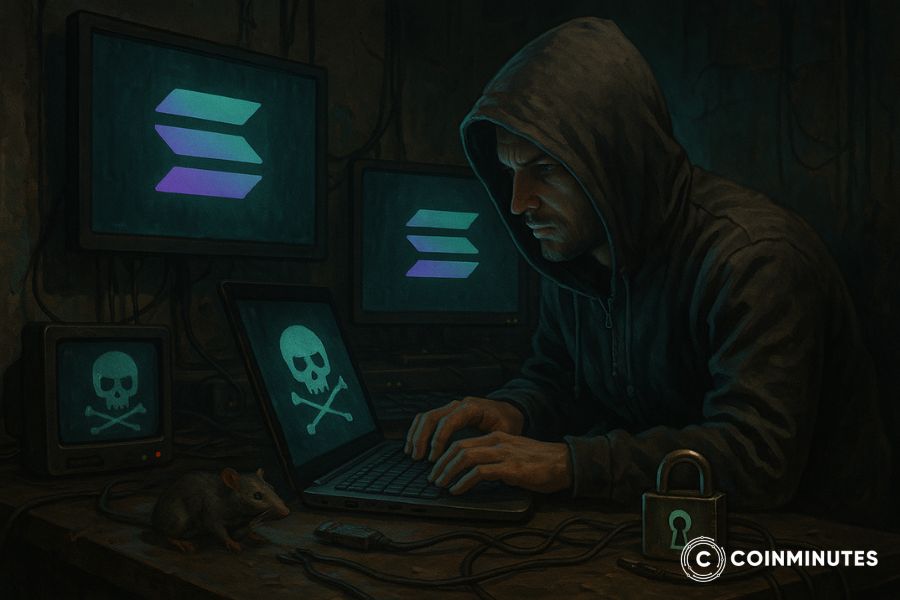
Ecosystem Risks
The collapse of the FTX exchange in November 2022 was almost a death blow for Solana.
Sam Bankman-Fried (SBF), the founder of FTX, was Solana's biggest and loudest supporter. His companies, FTX and Alameda Research, had invested billions in Solana and the "Sam coins" (projects he backed). When FTX was exposed as a massive fraud, everyone assumed Solana was a ghost town that was only propped up by fake money. The price of SOL crashed by over 95% from its peak, falling from $250 to under $10. I personally watched this happen and thought it might be the end for the project.
But it wasn't. The community and the developers who weren't just there for the SBF money... just kept building. The fact that Solana survived this "crypto-pocalypse," cut out the cancer, and rebuilt itself is now, ironically, one of the strongest arguments for its resilience.
Investing in Solana
This is not financial advice. This is just an educational breakdown of the factors you should think about.
Why Should You Consider SOL?
An investment in SOL is a bet on a high-performance, multi-chain future. It's a bet that speed, low cost, and a great developer experience will continue to attract the best apps and users. You're not investing in a store of value like Bitcoin; you're investing in a high-growth technology platform, much like you'd invest in a tech stock.
How to Buy, Sell, and Store SOL Safely
-
Buying: SOL is a top-tier crypto, so you can buy it on any major, trusted exchange like Coinbase, Kraken, or Binance.
-
Storing: As I've said, get your coins off the exchange. The best "hot wallets" (software wallets) for using Solana apps are Phantom and Solflare. For serious, long-term holding, you absolutely must use a "cold wallet" (hardware wallet) like a Ledger or Trezor.
Staking SOL
Staking is a big part of the Solana economy. You can "delegate" your SOL to a validator to help secure the network and earn a yield (paid in more SOL).
The most popular way to do this now is liquid staking. It's a brilliant idea.
-
You give your 10 SOL to a protocol like Jito or Marinade.
-
They stake it for you and give you back a new token, like JitoSOL or mSOL.
-
This new token automatically goes up in value (it's earning your staking rewards).
-
But the best part is that this new token isn't locked! You can take your JitoSOL and go use it in DeFi to earn even more yield. It's like earning interest on your savings account while also using that same money to invest somewhere else.
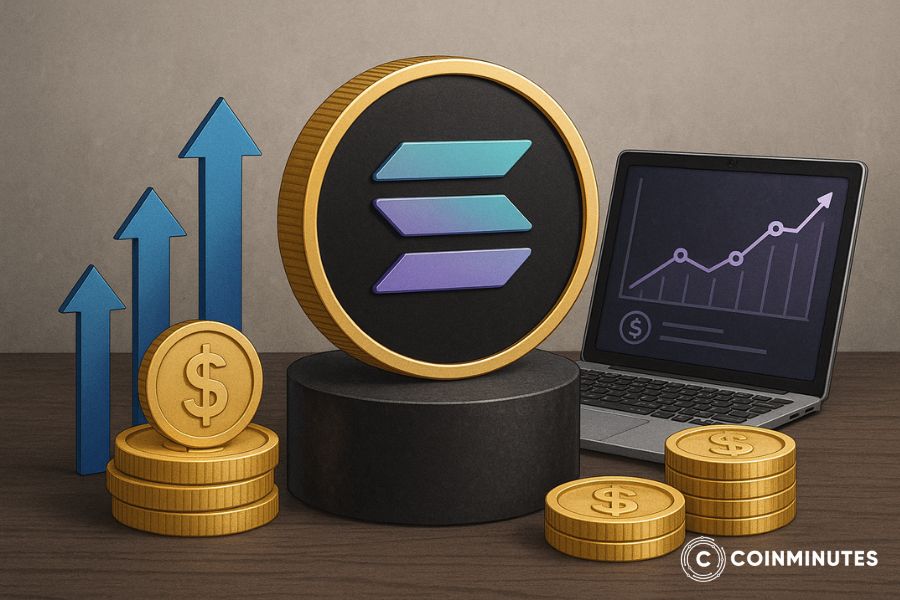
Price History, Volatility & Market Outlook
The price history of SOL is a lesson in extreme volatility. It went from under $1 in 2020 to over $250 in 2021, then down to $10 in 2022, and has since had another massive recovery. This is not a stable asset. It's a high-risk bet. Its future depends on whether it can keep its network stable, beat its competition, and attract the next generation of builders.
Regulatory Landscape for Solana
This is a very serious risk you need to know about. The U.S. Securities and Exchange Commission (SEC) has been very aggressive, and in several high-profile lawsuits, it has explicitly named SOL as a security. The legal battle is ongoing, but this claim hangs over the project like a dark cloud. If U.S. regulators win this fight, it could be very bad for SOL's price and its availability on American exchanges.
The Future of Solana
So what's next? Solana's roadmap is all about fixing its past problems and preparing for massive scale.
The #1 priority is Firedancer. This is the new, independent validator client I mentioned earlier. Once Firedancer is fully rolled out and adopted, it will basically make a network-wide crash (like the ones in 2021-2022) almost impossible. It's the key to building real trust.
The second big thing is Token Extensions. This is a new toolkit for creating tokens that I find very interesting. It lets creators build features directly into the token itself. Think of tokens with built-in rules like "this token can only be held by people who passed KYC" or "this token automatically pays a 5% royalty to the artist every time it's sold." This is the kind of boring, "enterprise-grade" stuff that big, serious institutions need before they'll be comfortable issuing their own stablecoins or digital bonds on a public blockchain.
Solana has been through fire. It survived a bubble, a series of humiliating crashes, and the collapse of its biggest financial backer. It's still standing and, in many ways, is stronger than ever.
Continue Your Crypto Journey with CoinMinutes
Solana is a top-tier project in the crypto space. It's not a "maybe" anymore; it's a real contender. It made a clear choice: to sacrifice some decentralization for a massive gain in speed and performance. This trade-off has made it the go-to chain for apps that need high throughput, but it also comes with real risks.
The crypto market is complicated and never stops moving. Understanding the tech, the risks, and the advantages of major projects like Solana is, in my opinion, essential for any informed investor. CoinMinutes is here to keep providing clear, simple, and factual content to help you navigate this space.
We hope this guide helped you get a solid handle on what Solana is and where it fits into the crypto world. We encourage you to continue your crypto journey with CoinMinutes.
Frequently asked questions
For everyday use, the two biggest and most-trusted software wallets are Phantom and Solflare. They work as browser extensions (like MetaMask for Ethereum) and mobile apps. They're what you'd use to interact with DeFi apps and NFT marketplaces. But, as we always say at CoinMinutes, for storing any serious amount of SOL long-term, you should use a hardware "cold" wallet like a Ledger or Trezor.
Think of it like this: Ethereum is like a big, secure, decentralized truck. It's super reliable, and everyone trusts it, but it's kind of slow and it's very expensive to ship a small package. Solana is like a brand-new bullet train. It's built for one thing: speed. It's incredibly fast and ridiculously cheap, able to handle thousands of "packages" (transactions) per second for almost free. The trade-off is that it's more centralized (fewer "drivers") and it has a history of "breaking down" (network outages), though it's been working hard to fix that.
"Safe" is a really strong word in crypto. In my opinion, no altcoin, including SOL, is "safe." It's an extremely volatile, high-risk asset. You should never invest more than you're willing to lose completely.
The deal with the SEC was a big part of that risk. The SEC had publicly claimed in lawsuits that SOL was an unregistered security. This was a dark cloud for a long time. However, the approval of spot Solana ETFs in the U.S. in late 2025 has provided significant regulatory clarity, much as it did for Bitcoin and Ethereum. While this is a very positive sign, it doesn't remove all regulatory risk.
This is the big debate, and in my opinion, the answer is "not really," at least not when you compare it to Bitcoin or Ethereum. It's much more centralized.
Why? Because running a "validator" node (one of the computers that secures the network) is incredibly expensive. You need a very powerful, high-end server to keep up with the network's speed. This high barrier to entry means only a small number of well-funded entities can afford to do it, which leads to a concentration of power. It's a trade-off: it gives up some decentralization to gain its incredible speed.
 English
English
 Vietnamese
Vietnamese


